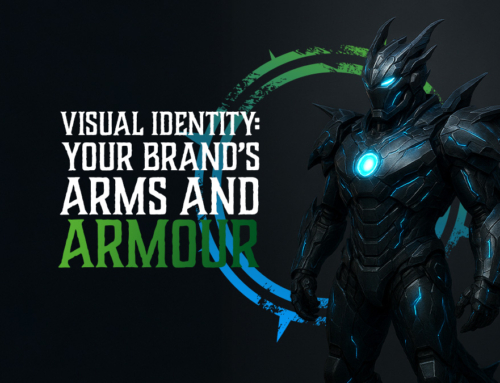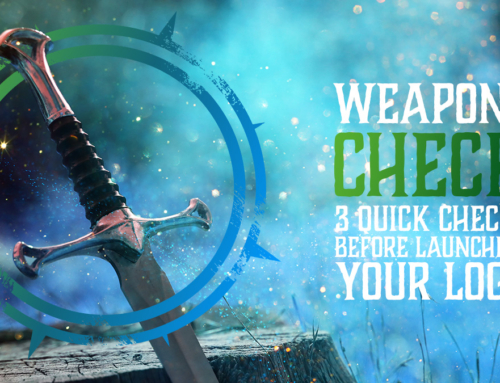‘Branding just isn’t as useful for small businesses.’
It’s a lie I hear people tell themselves all the time – one of many common brand misconceptions I encounter.
But I get it. It feels like it should be true. It’s certainly perpetuated enough to feel like it is. Branding can get a bad rep. It’s either misunderstood, dismissed, or worse, completely overblown into something small businesses assume they can’t afford.
Or something they don’t even need.
And nothing could be further from the truth.
So let’s set the record straight first and foremost. Branding isn’t fluff. It’s not just for big business. And it is definitely not optional.
The problem is, branding is a bit murky. Wherever you turn, you’ll get lazy half-truths, outdated advice, or constantly perpetuated myths. These falsehoods and whispers hold your business back from building a bold brand that connects with your audience.
So, let’s break a few.
Understanding Branding
Before we can slay the beast, we’ve got to define it. And branding is a big beast to understand.
Let’s start with what it isn’t – it’s not your logo. It’s not your website or colour palette. These are expressions of your branding.
Branding is more about communication. If a brand is the feelings people get when they interact with your business, branding is how you communicate these. It’s the voice and the promise. It’s what you stand for, how you choose to show up and what people say about you once you’ve left. It’s all your reputation.
Great brands build:
- Recognition (People know and identify you)
- Relevance (People feel like it’s for them)
- Resonance (People feel connected and trust)
And these propel small businesses forward, if they use them well.
Common Brand Misconceptions
There are dozens of little misconceptions out there around brand and branding. These are some of the worst offenders, the biggest beasts to slay. You’ve likely heard (or even believed) some of these in the past.
Don’t worry, though, you’re not alone.
Brand Myth 1: Branding is All About the Logo
This is my personal favourite (unfavourite?) myth. Branding is all about the logo.
Oh, how very wrong.
If this were a case, every small business with a Canva account would be a titan. Create a quick logo, and BAM! – branding done, right?
Yes, visuals are important. I have to believe that I create them! But they don’t make a brand on their own. Brands are much more than skin-deep. A brand is how you interact with customers, how your products make them feel and how people talk about your business.
Creating a strong brand experience means starting with definition and discovery. What makes you different, and how do you want your audience to feel?
None of this can be created with just a logo. The logo acts as an avatar that represents these feelings.
The brand is the experience, the logo is a marker.
Brand Myth 2: Small Businesses Don’t Need a Brand Strategy
I’ve seen this beast kill more than any of the others.
Small business owners can be fooled into thinking they’re too small to bother with a brand strategy. But the truth is, you need it more than anyone. Small businesses don’t have the luxury of mass exposure to build awareness. They need to fight for every impression or connection.
And that is so much harder without a plan.
A solid brand strategy helps you clarify who you are and stand out in crowded markets. It’s also great at showing your value, letting you charge your worth and build loyalty without begging.
With strategic thinking, even a one-person business can build a strong enough brand to demand attention.
Brand Myth 3: Branding is Just Marketing
Branding and marketing are intrinsically linked. But they’re NOT the same.

Branding is who you are – your unique identity and the emotional connections you make with your customers. Marketing drives awareness and sales through specific campaigns.
Marketing without branding is like running into a room and shouting your message. People might hear you, but they won’t remember you (or at least, not fondly).
Branding is a more long-term, consistent strategy, while marketing is short-term and constantly evolves. Where branding is about relationships, marketing is about creating need. And your business needs both.
Get your branding right, then let your marketing mirror that across your ecosystem.
Brand Myth 4: A Consistent Brand is Too Restrictive
Speaking of consistency, that brings up the next myth. Some people worry a strong brand will be restrictive. This is especially common for creative thinkers.
This couldn’t be further from the truth. Consistency doesn’t kill creativity; it focuses it.
A set of brand guidelines helps ensure everything you create feels like you. They don’t trap you or force you to repeat the same designs. Instead, they act as an area to be creative inside, while maintaining consistency.
And remember, consistency builds trust, which in turn creates loyalty. Loyalty is vital for small businesses, especially as it can be costly to continually chase new clients.
Brand Myth 5: Branding is a One-Time Effort
Brands aren’t static. They’re constantly evolving. If they don’t, they get left behind.
Your market and audience shift all the time. If you don’t align with it, a message that once brought people flocking to your doors may fall flat. Great brands stay rooted in their values, but grow with intention.
At first glance, this may seem to contradict Myth 4. How can something be both changing and consistent? It’s a fine balance for sure, but it is achievable. In short, a brand’s core identity should remain consistent, but the way the message is used can change and evolve with the market.
Branding is a practice, not a project. It’s a constant action and not a one-and-done exercise. Revisiting your brand often helps you keep it aligned and stay relevant. It can even reduce future costs – regular tweaks are far easier than sudden pivots!
Brand Myth 6: Branding Is Just For The Consumer
Alright, a LOT of your brand faces outwards. But the roots run inwards.
Your brand has the power to change internal culture as well as external perception. Even with a small team (or freelance partners), a strong brand becomes a rallying point that they can all get behind. When your people see what you stand for, they can make better decisions and speak with a unified voice.
This even works for solo business owners. The more you understand and align with your brand, the easier it is to make positive decisions that move you forward.
Brands that only work on the outside are just costumes. When the brand works inside, too, they’re a functioning identity.
Brand Myth 7: If You Have A Great Product, You Don’t Need A Brand
People don’t buy based on specifications and features. At least, the vast majority don’t. Most people buy with their hearts first, then justify it with their heads. That means they need to feel something, and that’s what your brand should be doing.
You might have an incredible product or service, but if your brand is forgettable, you’ll be buried by less competent competition that knows how to connect.
The Benefits of Challenging Common Brand Misconceptions
Many brand misconceptions come from good intentions, but they’re nevertheless dangerous to your business. You can miss out on opportunities and damage your reputation if you don’t work on your brand, leaving you in a vulnerable position. In tough markets and times, it’s vital, as without awareness, your business can quickly lose out to competitors.
When you dispel the myths and understand the truth, many benefits are revealed. Firstly, you gain clarity on your purpose and personality. These are vital components of your brand that help you stand out as unique and aid in decision-making.
You also begin to attract the right customers, not just anyone with a wallet. There are inherent problems in working with ‘anyone and everyone’, and it is often one of the key reasons small businesses struggle. By challenging brand misconceptions and working on your brand identity, you gain a greater understanding of who is right for your brand. Ultimately, this information can be used to build deeper connections and attract more valuable clients.
The other major benefit is positioning. Once you let go of common brand misconceptions, you firmly stand out for what you believe in, not just your product. Anyone can replicate your product or service, but they can’t replicate YOU. This is a massive advantage small businesses have over larger brands.
Branding isn’t about being flashy. It’s about being real, strategic and consistent. That’s what makes your brand memorable.
Steps to Build a Strong Brand
But how can you use this practically? Putting your brand on solid ground means adding foundations you can rely on, so it’s best to start there.
- Define your Purpose, Values and Vision
These are the cornerstones of your business, helping define the brand and showcasing your uniqueness. Getting these right early helps build everything else with consistency and intention.
Ask: What do we believe in? Why do we exist beyond profit? This is your why, the compass that directs all your efforts. - Understand your Target Audience
Once you know yourself, you can begin to link it to your target audience. Understanding their motivations (needs, wants, desires and fears) is vital work to help connect your brand with them on an emotional level. The sharper this focus, the stronger the message
Ask: Who is my ideal client? What problem do they have, and how can I solve it? How do they feel before and after working with me? - Create a Cohesive Identity
Your visuals and character should reflect the brand identity you built through your purpose, values and vision. Ensure design, tone and messaging all speak the same language. Everything should feel unmistakably ‘you’.
Ask: Do the visuals and messaging match? Do they evoke a strong emotion? Do my visuals help identify me? - Stay Adaptable and Open to Feedback
Great brands listen and act on feedback. They aren’t static, but evolve to customer preferences. Let feedback shape how you change, but NOT your core.
Ask: How do people feel about the brand? What are they saying about it? What would I like them to be saying about it?
Building a strong brand doesn’t happen overnight, but taking these steps helps put you on the right path.
Conclusion – Common Brand Misconceptions only damage your business if you let them
The sad truth is, many businesses fail because they’re confused about what their brand is doing for them. Some see it as pointless fluff and fail to gain traction. Others see it as a necessary evil and never unlock their true potential. In reality, branding isn’t smoke and mirrors; it’s hard steel and unshakable intention.
When you shake off the myths, you give your business a unique identity. Something that makes your audience feel connected to you. A cause they believe in.
Something you can be proud of and wear confidently.
The benefits are huge – increased loyalty, easier sales and ultimately, growth.
Once you drop common brand misconceptions and do real work, you’ll create something no competitor can copy.
Ready to dispel your brand misconceptions and create an identity that attracts your ideal clients? Book a call here and we’ll discuss your needs.





